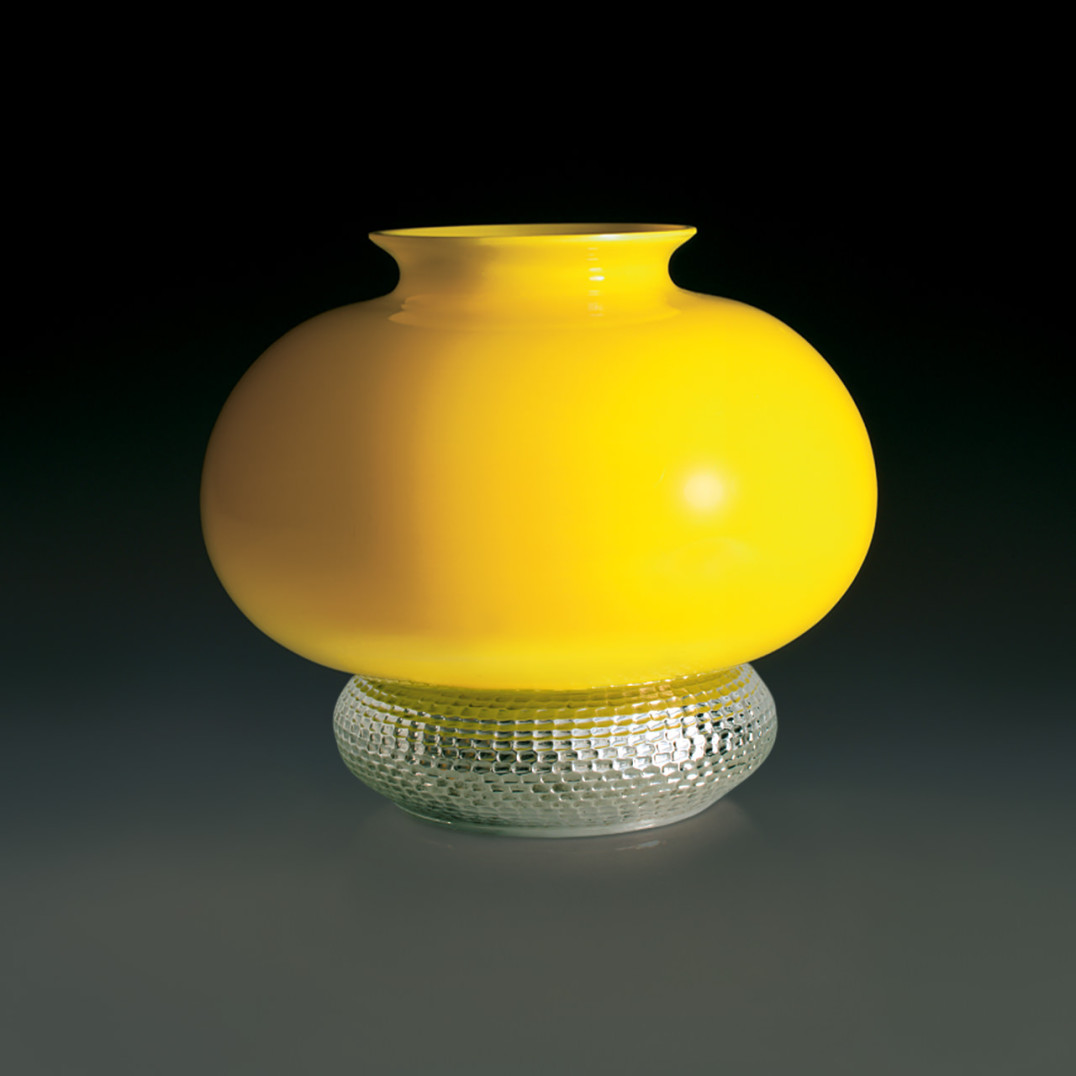
Franca HelgFranco AlbiniAnemone, 1971
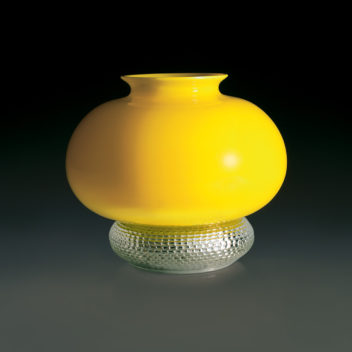
Franca HelgFranco AlbiniAnemoneSalviati & C., 1971
Vase in cristallo glass cased in yellow glass. It is part of a series of vases designed by Albini and Helg for San Lorenzo S.r.l. in Milan in the Anemone, Fresia, Forsizia variations.
Engraved: Salviati per San Lorenzo Albini-Helg.
5 3/4 in, high. (14.6 cm)
Exhibitions:
1972, Vienna, Industrial Design
aus Italien;
2001, Milan, Murano: Vetri dalla Collezione Olnick Spanu, Spazio Oberdan.
Bibliography and comparative texts:
Industrial Design…, 1972, p. 34;
Olnick Spanu, 2001, n. 197.
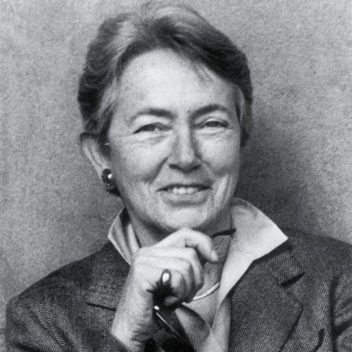
Franca Helg 1920–1989
Franca Helg was born in Milan on February 21, 1920. She graduated from the Architecture School at the Politecnico in Milan in 1945. Her professional career, which she began independently, collaborating with Franco Albini after 1951, with Antonio Piva after 1962, and with Marco Albini after 1965, embraces the entire range of design work. She was a tenured professor of Architectural Composition III in the Architecture Department of the Politecnico in Milan. She held classes in architectural design at the Technische Universität in Munich and at the Catholic University of Córdoba in Argentina, and specialization seminars in Cuzco, Peru, in Quito, Ecuador, in Bogotà, Colombia, in Salvador de Bahia, Brasil, in Madrid, and in Barcelona. She lectured at conferences in Italy and abroad, and was a member of competition juries and evaluation committees in Europe and overseas.
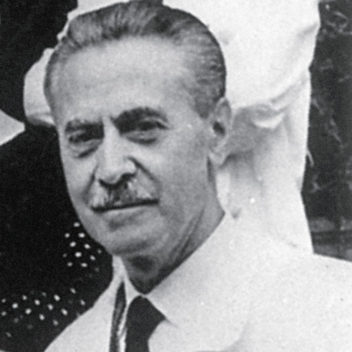
Franco Albini 1905–1977
Franco Albini was born in Robbiate (Como). He graduated with a degree in architecture from the Politecnico in Milan in 1929. The following year, he opened his own architecture studio, concentrating on product and exhibition design, and becoming one of the world's most significant designers in this field during the course of his career. In 1945 and 1946, he directed the architectural review Casabella, and between 1949 and 1977, he turned to teaching, first at the universities in Venice and Turin until 1963, then at the Politecnico in Milan. His works are characterized by a rational severity, which is evident in works such as the renovation and interior design of the Palazzo Bianco in Genoa (1950), the design for the display of the Treasure of San Lorenzo in Genoa (1952) in collaboration with Franca Helg, and the restoration of the Palazzo Rosso in Genoa (1952-1961). His successful work in the field of design is noted for the essential elegance which distinguishes his many furniture projects, such as the Margherita armchair for Bonacina (1950), the Fiorenza armchair for Artflex (1952), the Luisa chair for Poggi (1954), and the Credenza (1967) designed in collaboration with Franca Helg. This partnership also produced the collection of glass pieces designed for San Lorenzo S.r.l. and crafted by Salviati. In the early '60s, in collaboration with Franca Helg and Bob Noorda, he designed the stations' furnishings and signage for Milan's Subway Line 1.

Salviati & C. 1877–
In 1859, Antonio Salviati, a lawyer, founded the “Salviati Dott. Antonio fu Bartolomeo” furnaces. With the help of Lorenzo Radi and Enrico Pondio, he developed a new method of making mosaic with glass. The mosaic tesserae that decorate the dome of St. Paul’s Cathedral and the Hall of the House of Parliament in London, the Opera Theatre in Paris, and many others were made by Salviati. In 1877, Salviati founded Salviati & C. in Murano, employing some of the best glass masters operating at that time: Antonio Camozzo and the talented Giovanni, Giuseppe, Benvenuto and Benedetto Barovier. They created a collection of glasses, stemware, bowls, chandeliers and vases, and a range of etched pieces. Salviati, who was known for his innovation, is recognized for the rediscovery of the avventurina, a fiamma, and opalino types of glass. Antonio Salviati died in 1890 and at the beginning of the 20th century the company became property of Maurizio Camerino, a young glassmaker who had started his craft at Salviati & C. During the 1930s, the Camerino family decided to abandon the production of mosaic to focus on the making of decorative objects and lighting. In the 1950s, with Luciano Gaspari as the new artistic director of Salviati & C., the company developed frequent collaborations with architects such as Sergio Asti, Romano Chirivi, and Vinicio Vianello, as well as with international designers such as Heinz Oestergaard and Claire Falkenstein. Today, Salviati remains one of the most representative companies for glassmaking in the world and continues to establish collaborations with many inspiring designers.
Franca HelgFranco AlbiniAnemone, 1971
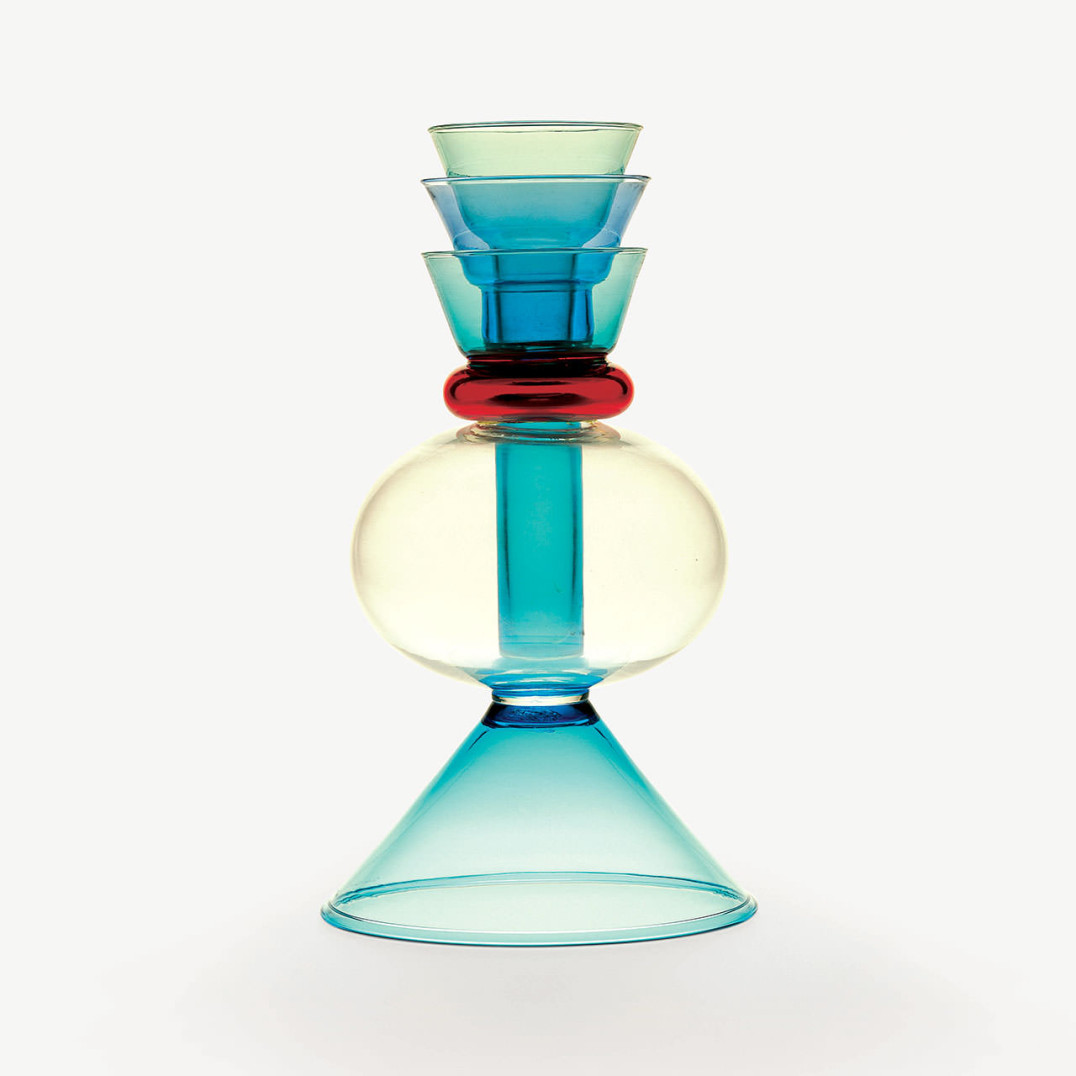
Marco ZaniniAlpha Centauri, 1982
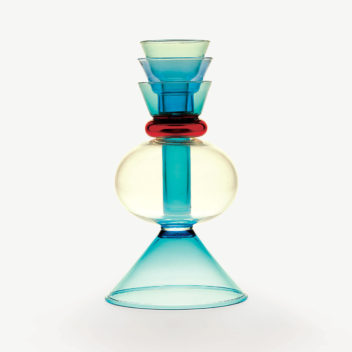
Marco ZaniniAlpha CentauriToso Vetri d'Arte, 1982
Vessel with elements in turquoise, cristallo, and red trasparente glass.
Engraved: Memphis MADE IN ITALY by Toso Vetri d’Arte.
15 9/16 in high (39.5 cm)
Exhibitions:
2001, Milan, Murano: Vetri dalla Collezione Olnick Spanu, Spazio Oberdan.
Bibliography and comparative texts:
Memphis…, n. 62;
Olnick Spanu, 2001, n. 196.
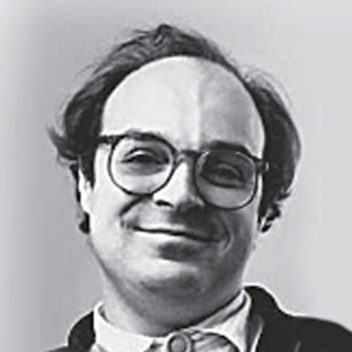
Marco Zanini 1954–
Born in Trent, Zanini graduated with a degree in architecture from the Università di Firenze and later took several courses at the Architectural Association in London. From 1975 to 1977 he traveled through Mexico, Canada, and the United States, where he worked briefly. At the end of 1977, he returned to Italy and settled in Milan where he began working with Ettore Sottsass. He became a partner in the Studio Sottsass Associati in 1980, and in 1981 was a founding member of the Memphis Group, in which he participated actively through 1988. He showed in several exhibitions with Memphis, designing ceramics, lighting systems, furniture, and several series of glass objects crafted by the Vetreria Toso Vetri d'Arte. He collaborated with Studio Sottsass Associati on many projects such as office furniture for Knoll International, exhibition designs and interiors, urban furniture, and industrial design objects. Independently, he designs and makes jewelry, ceramics, furniture, and blown glass objects (Venini, 1989).
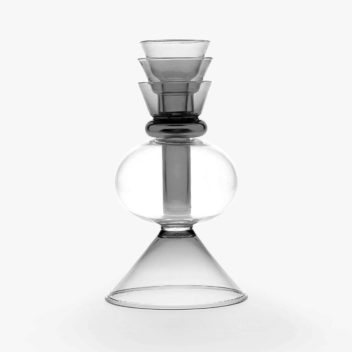
Toso Vetri d'Arte 1981–1990
Toso Vetri d'Arte was established in 1980 by Luigi Toso and three glass-blowing maestri: Carlo Tosi "Caramea", Dino Toso, and Luigi Visentin. Tosi had worked on Murano for over 30 years and was renowned for his particular skill in goblets. Other designers and collaborators included Fulvio Bianconi, Marco Zanini and Ettore Sottsass, who, in 1981, founded the Memphis Group. Toso Vetri d'Arte produced glass for the Memphis Group from 1981 to 1990. In 1990, Toso Vetri d'Arte was bought out by Andrea Boscaro and renamed Compagnia Vetreria Muranese.
Marco ZaniniAlpha Centauri, 1982
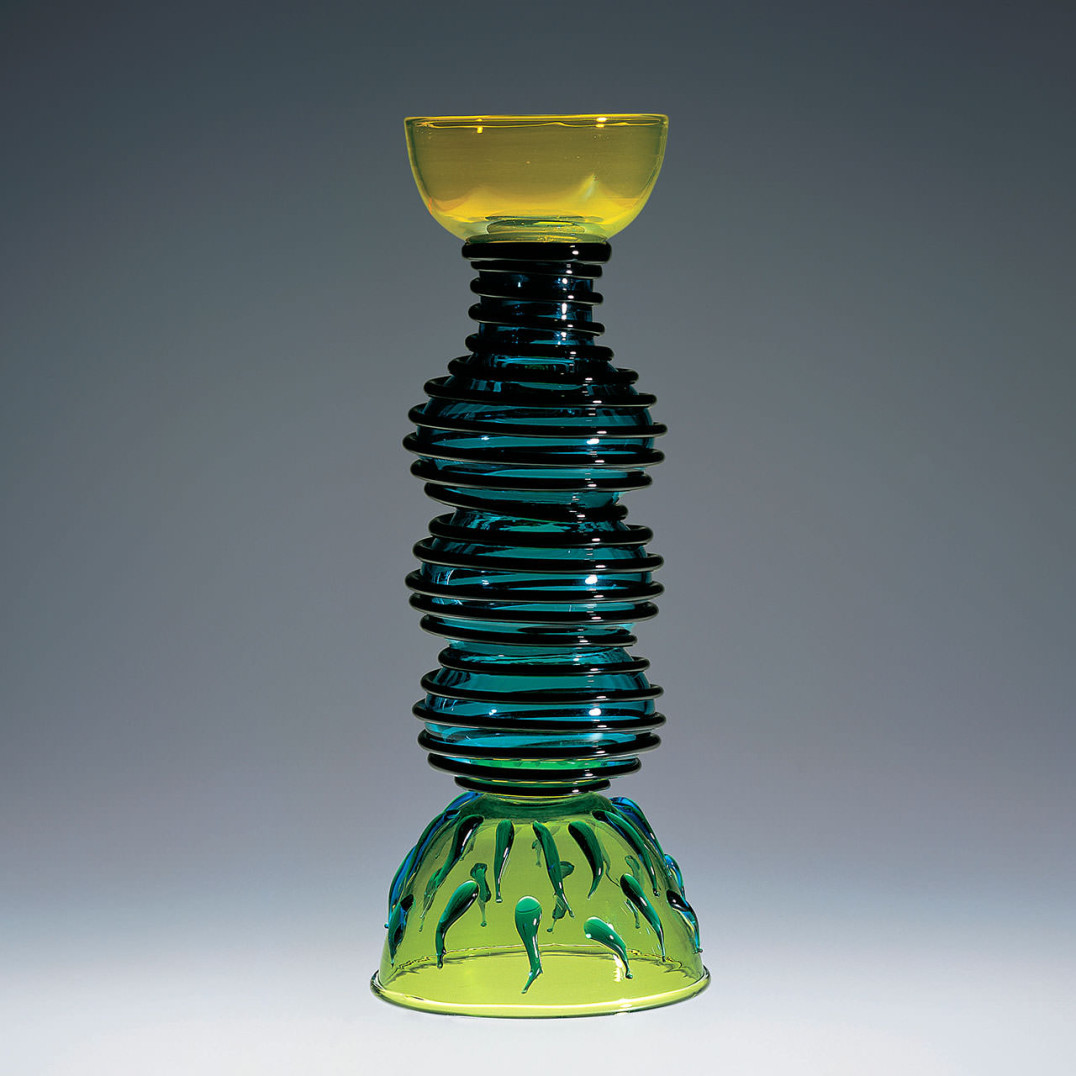
Ettore SottsassAlioth, 1983
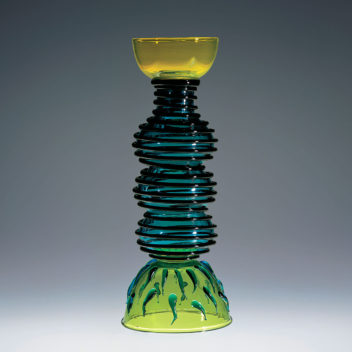
Ettore SottsassAliothToso Vetri d'Arte, 1983
Vessel with elements in turquoise and yellow trasparent glass with applications of multicolored glass.
Engraved: E. Sottsass.
18 in. high (45.7 cm)
Exhibitions:
2001, Milan, Murano: Vetri dalla Collezione Olnick Spanu, Spazio Oberdan.
Bibliography and comparative texts:
Memphis…, n. 64;
M. Barovier, B. Bischofberger,
M. Carboni, 1998, p. 25;
M. Barovier, 1999, p. 311;
Olnick Spanu, 2001, n. 195.
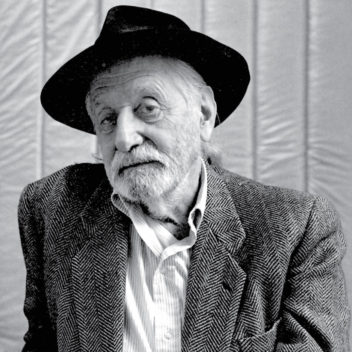
Ettore Sottsass 1917–2007
Born in Innsbruck, Austria, Ettore Sottsass graduated in architecture at the Turin Politecnico in 1939. In 1946 he settled in Milan and began to work in graphics and illustration. A few years later he opened his own studio. From 1949 to 1954 he designed and built several public housing projects in Turin. He was invited to participate in several editions of the Triennale. In 1958, he became a consultant for Poltronova and Olivetti, the company for which he designed the first Italian calculator, Elea 9003, which won him one of the four Compasso d'Oro awards (1959 edition) he collected during his twenty-year collaboration with the company. For Olivetti he designed office machines and typewriters such as Praxis, Tekne, and Valentine, objects whose design quality put them into the permanent collections of museums such as the Museum of Modern Art in New York and the Centre Pompidou in Paris. In 1981, he opened the Studio Sottsass Associati, working in the fields of architecture, graphics, and industrial design. Together with Marco Zanini, he founded the Memphis Group, which pursues its objective of creating a radical iconographical update in figurative language. For Memphis, Sottsass designed furniture, lamps, and accessories, including a series of multicolored glass pieces made of elements crafted by Toso Vetri d'Arte (1982-1986). His preceding experience with glass dated back to 1974, when he designed a series of objects for Vetreria Vistosi. His interest in glass led him to design several pieces for Venini in the '90s and several limited series of works in glass for the Galleria Marina Barovier.

Toso Vetri d'Arte 1981–1990
Toso Vetri d'Arte was established in 1980 by Luigi Toso and three glass-blowing maestri: Carlo Tosi "Caramea", Dino Toso, and Luigi Visentin. Tosi had worked on Murano for over 30 years and was renowned for his particular skill in goblets. Other designers and collaborators included Fulvio Bianconi, Marco Zanini and Ettore Sottsass, who, in 1981, founded the Memphis Group. Toso Vetri d'Arte produced glass for the Memphis Group from 1981 to 1990. In 1990, Toso Vetri d'Arte was bought out by Andrea Boscaro and renamed Compagnia Vetreria Muranese.
Ettore SottsassAlioth, 1983
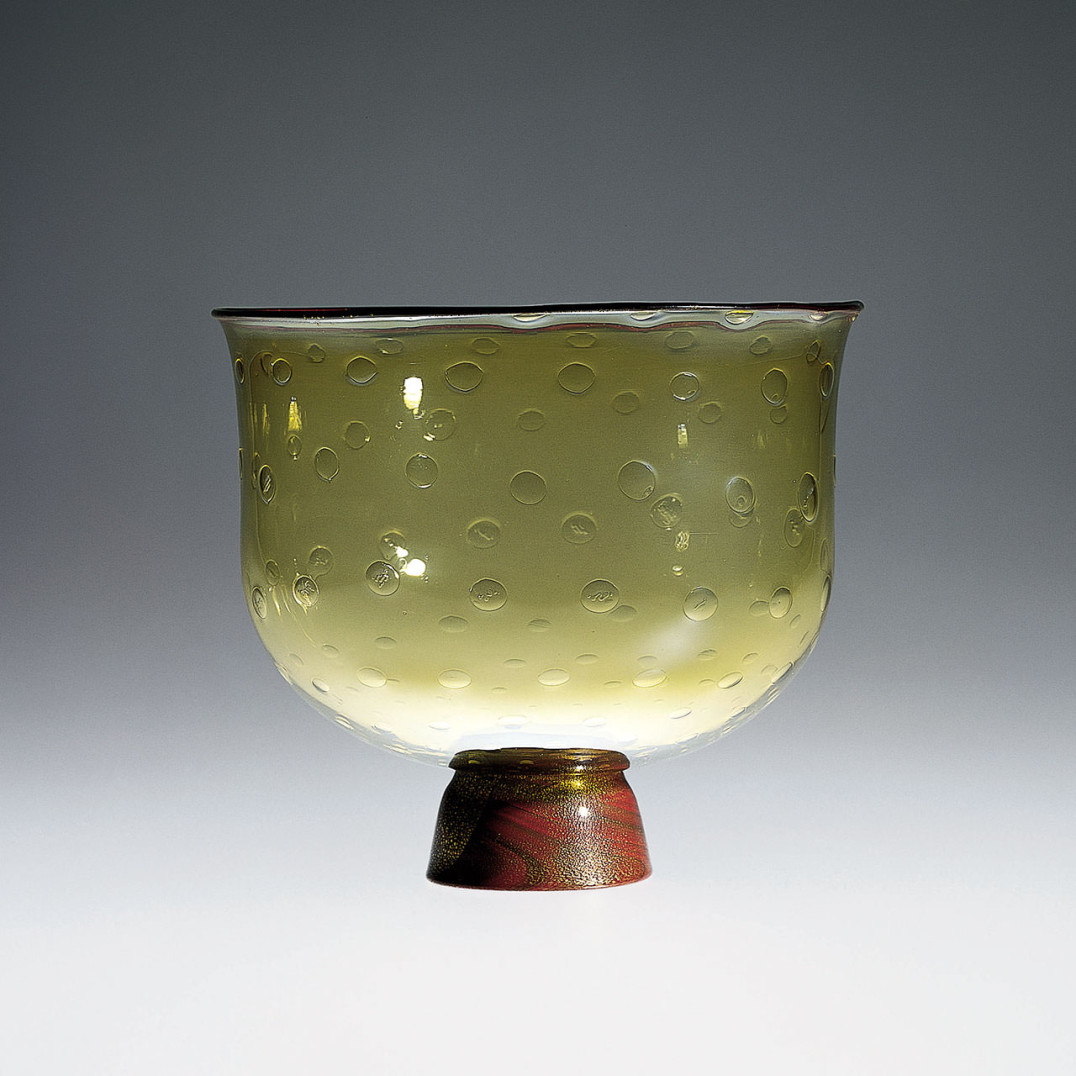
Carlo ScarpaTrasparente, 1930-1931
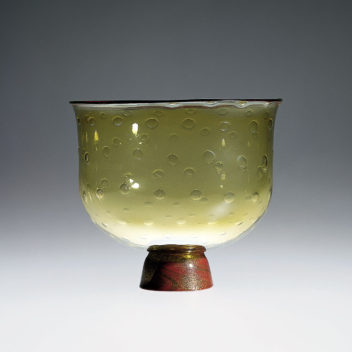
Carlo ScarpaTrasparenteMaestri Vetrai Muranesi Cappellin & C., 1930-1931
Straw-colored bowl composed of thin glass decorated with large bubbles. Foot and trim in red pasta vitrea with application of gold leaf.
Acid stamped:
M.V.M. Cappellin Murano.
6 3/4 in. high (17.2 cm)
Ø; 7 3/4 in. (19.7 cm)
Exhibitions:
1930, Monza, 4th Esposizione Internazionale delle Arti Decorative e Industriali Moderne;
1931, Amsterdam, Exhibition of modern Italian glass, ceramic, and artistic lacework, Stedelijk Museum;
2000, New York, Venetian Glass, Museum of Arts & Design;
2001, Milan, Murano: Vetri dalla Collezione Olnick Spanu, Spazio Oberdan.
Bibliography and comparative texts:
G. Dell’Oro, 1931, p. 563;
Mostra di vetri…, 1931, p. 19;
Domus, 1933, October, pp. 527-529;
R. Barovier Mentasti, 1982, p. 260;
Mille anni…, 1982, p. 262;
Vetri Murano…, 1982, p. 26;
Vetri di Murano…, 1982, n. 106;
F. Deboni, 1996, p. 34;
M. Barovier, 1997, p. 192;
M. Barovier, 1998 (a), p. 6;
M. Barovier, 1999, p. 114;
Olnick Spanu, 2000, n. 17;
Olnick Spanu, 2001, n. 30.
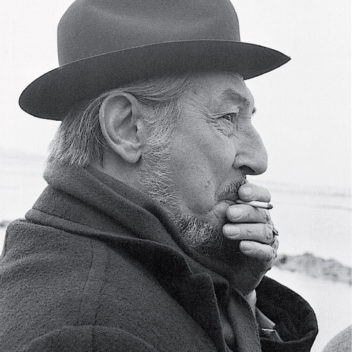
Carlo Scarpa 1906–1978
Born in Venice, Carlo Scarpa graduated from the Accademia di Belle Arti in Venice in 1926. Soon after his graduation he began work at M.V.M. Cappellin, where he soon replaced Vittorio Zecchin as artistic director. Following the direction laid down by Zecchin, he initially created transparent blown-glass pieces with essential forms, in particular the pieces exemplified by their conic base. Scarpa later designed light glass pieces in brightly colored pasta vitrea, or decorated fenici. Deservedly famous was the refined collection of lattimi decorated with gold or silver leaf, which he presented for the first time in Monza in 1930 together with the canne verticali and millefiori glass works. Giacomo Cappellin closed the workshop in 1932 for bankruptcy, putting an end to the collaboration with Carlo Scarpa. In 1934, Scarpa became the artistic director of Venini & C., where he continued to work through 1947. Alongside Paolo Venini, who often participated in the design of glass, Carlo Scarpa experimented with the vast potential of glass, using and innovating many traditional techniques, by which he created extraordinary modern pieces. After the mezza filigrana glass works came the sommersi, the pasta vitrea inspired by Chinese ceramic motifs, the corrosi, the battuti, the vessels a fasce colorate, a pennellate, the variegati, and the famous multicolored murrine with the surfaces finished at the carving wheel. After World War II, Carlo Scarpa worked almost exclusively as an architect and teacher.
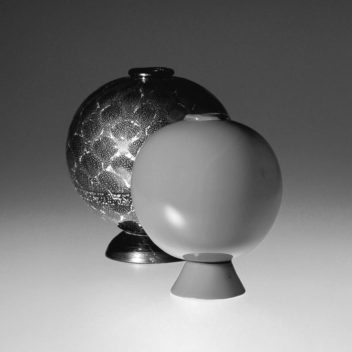
Maestri Vetrai Muranesi Cappellin & C. 1925–1932
M.V.M. Cappellin & C. was founded in 1925 by Giacomo Cappellin after the closing of Cappellin Venini & C. Vittorio Zecchin, a painter from Murano who had worked for Cappellin Venini, continued his collaboration with Cappellin for a short time, designing soffiati, blown glass pieces characterized by delicate colors and pure lines. At the end of 1926, following Zecchin's departure, the young Carlo Scarpa took over the artistic direction of the company. Initially, he proceeded along the course taken by his predecessor, creating lightweight blown pieces with simple geometric forms. These were followed by many collections of refined elegance characterized by various transparent textures and often distinguished by vivid colors. Despite the remarkable success at the 1930 Biennale di Monza, M.V.M. Cappellin & C. was forced to close in January 1932. This was most likely the result of inefficient financial management.
Carlo ScarpaTrasparente, 1930-1931
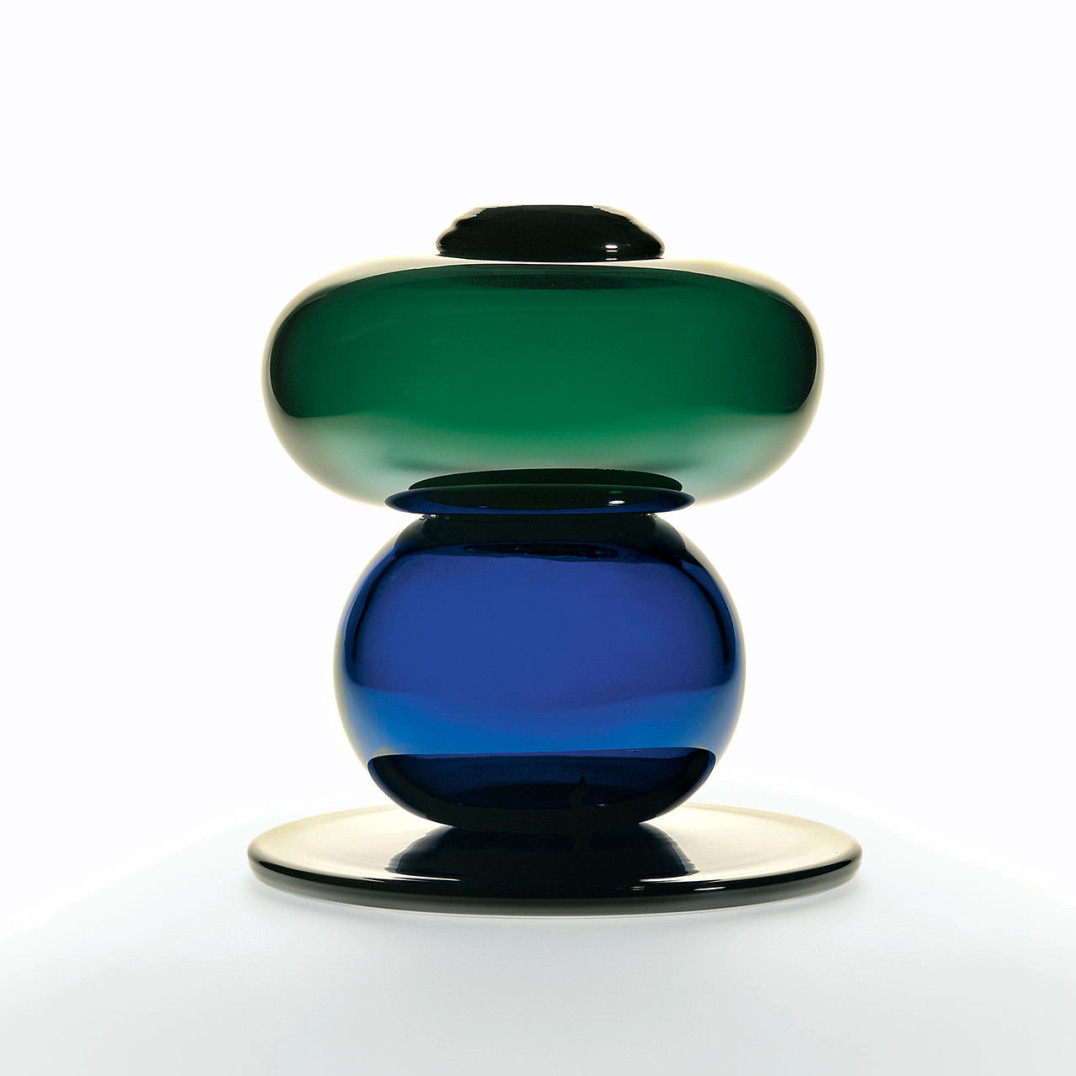
Ettore SottsassMorosina, 1974
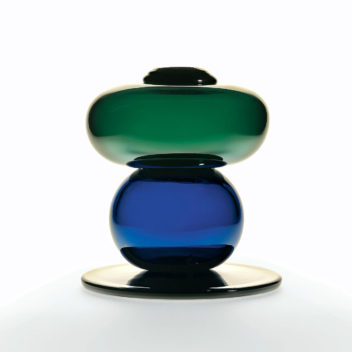
Ettore SottsassMorosinaVetreria Vistosi, 1974
Vessel with elements in blue and green trasparent glass with trim in black glass.
Engraved: Sottsass /250 Vistosi.
11 3/4 in. high (29.8 cm)
Exhibitions:
2001, Milan, Murano: Vetri dalla Collezione Olnick Spanu, Spazio Oberdan.
Bibliography and comparative texts:
M. Cousins, 1995, p. 100;
M. Barovier, B. Bischofberger,
M. Carboni, 1998, p. 17;
M. Romanelli, 2000, p. 191;
Olnick Spanu, 2001, n. 194;
A. Dorigato, 2002, p. 354.

Ettore Sottsass 1917–2007
Born in Innsbruck, Austria, Ettore Sottsass graduated in architecture at the Turin Politecnico in 1939. In 1946 he settled in Milan and began to work in graphics and illustration. A few years later he opened his own studio. From 1949 to 1954 he designed and built several public housing projects in Turin. He was invited to participate in several editions of the Triennale. In 1958, he became a consultant for Poltronova and Olivetti, the company for which he designed the first Italian calculator, Elea 9003, which won him one of the four Compasso d'Oro awards (1959 edition) he collected during his twenty-year collaboration with the company. For Olivetti he designed office machines and typewriters such as Praxis, Tekne, and Valentine, objects whose design quality put them into the permanent collections of museums such as the Museum of Modern Art in New York and the Centre Pompidou in Paris. In 1981, he opened the Studio Sottsass Associati, working in the fields of architecture, graphics, and industrial design. Together with Marco Zanini, he founded the Memphis Group, which pursues its objective of creating a radical iconographical update in figurative language. For Memphis, Sottsass designed furniture, lamps, and accessories, including a series of multicolored glass pieces made of elements crafted by Toso Vetri d'Arte (1982-1986). His preceding experience with glass dated back to 1974, when he designed a series of objects for Vetreria Vistosi. His interest in glass led him to design several pieces for Venini in the '90s and several limited series of works in glass for the Galleria Marina Barovier.
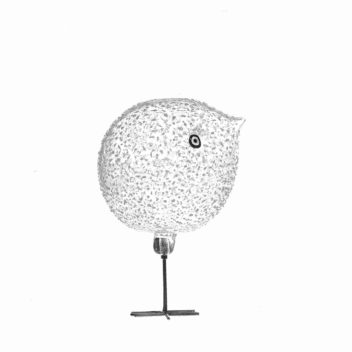
Vetreria Vistosi 1945–1990
The descendant of a family who had been Murano glassmakers for hundreds of years, Guglielmo Vistosi opened the Vistosi furnace in 1945 to produce glass components for lighting. After his death in 1952, the direction of the company was taken over by his brother Oreste and his nephews Gino and Luciano. They carried on the line of production, serving as designers as well. Vistosi also sought the collaboration of many independent artists and professionals such as Alessandro Pianon, Peter Pelzel, and Fulvio Bianconi. During the '60s, the company, successful for its essential forms and the sobriety of its colors, received many awards. During the following decade, its pieces were designed by Angelo Mangiarotti, Enrico Capuzzo, Gae Aulenti, Vico Magistretti, Elenore Peduzzi Riva, and Ettore Sottsass Jr. After the company's change of ownership, the furnace produced glass components for lighting until it was closed in the early '90s.